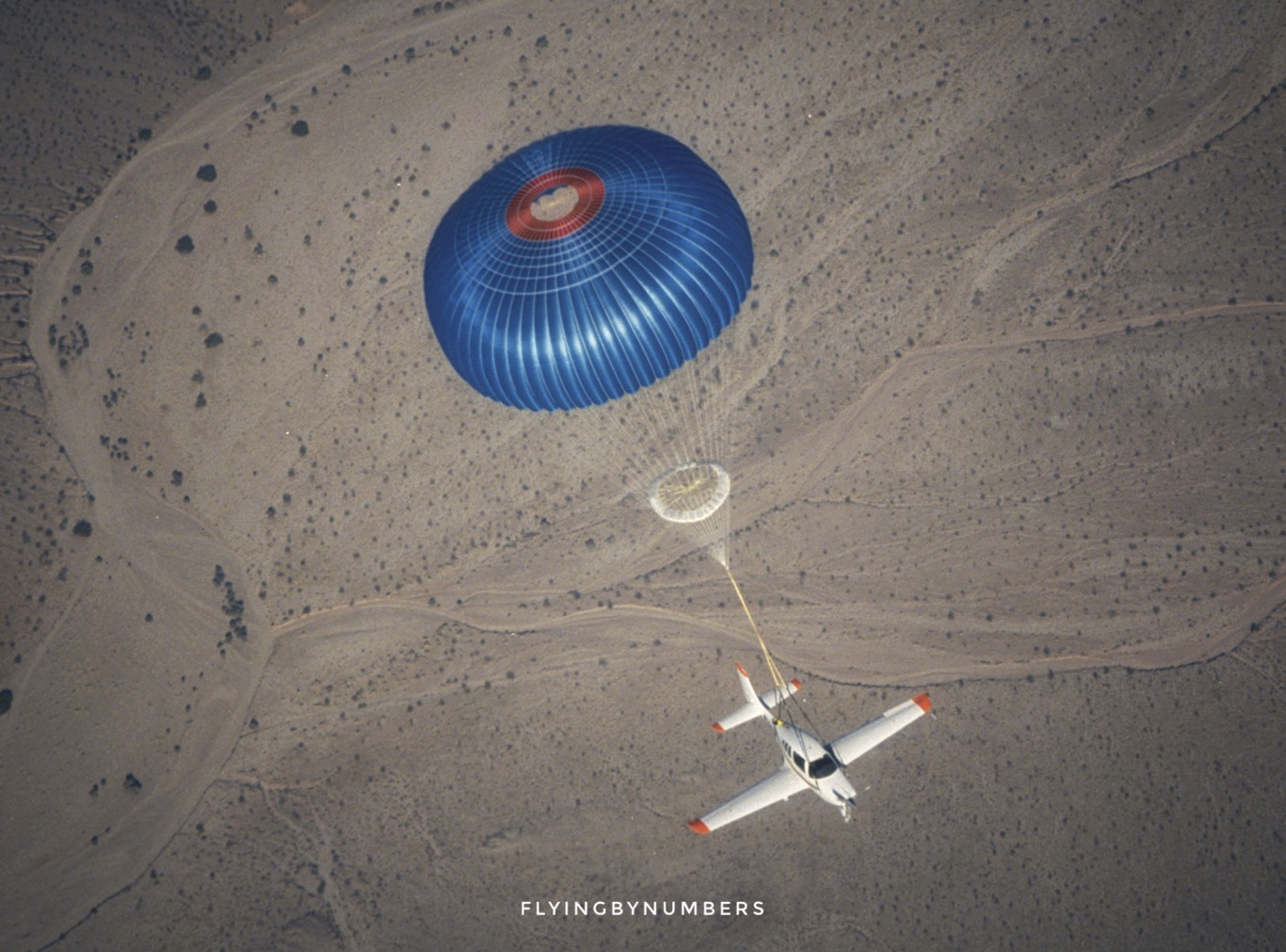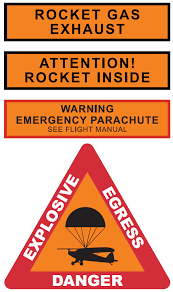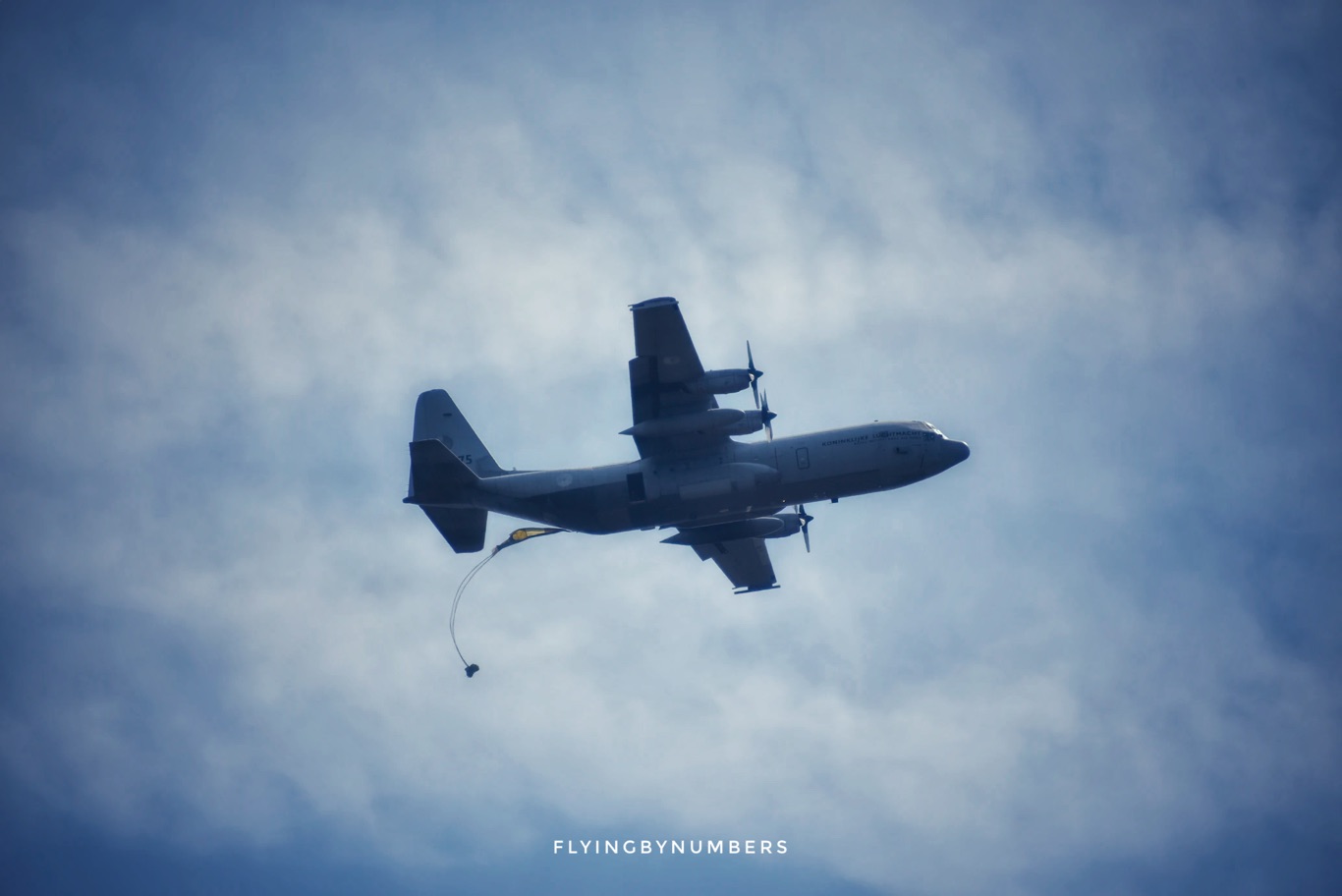As a frequent flyer, the idea of parachutes being available on planes is a comforting one. Needing one would be an extremely rare event, but after all, many other extreme scenarios are covered. Under every seat lies a lifejacket for emergency ditching into water, and planes are fitted with dropdown oxygen masks incase the windows shatter or the aircraft loses pressure.
Admittedly, supplying individual parachutes to passengers is impractical. Can you imagine the queue while 300+ unqualified panicked passengers try to fit their chutes, learn how to operate them and reach the exit whilst the aircraft plummets?!
So, while personal parachutes are impractical, why can’t we simply attach a large parachute to the plane itself?
Judging by the huge number of search results for “Can you put a parachute on a plane?” it’s something that we’ve all asked Google at some point!
The answer is, yes, we can — in some situations you can simply attach a large parachute to be operated in emergencies.

So if it’s possible, why don’t commercial planes have parachutes fitted as standard? And would using them make us any safer in an emergency? We take a look at the key arguments surrounding this extreme safety measure.
Can you put a parachute on a plane?
Yes. Aircraft parachutes are, in fact, an option on some popular models, such as the Cirrus SR22 range. There are also firms such as BRS, supplying parachutes kits for many general aviation aircraft, including Cessna.
Known as ballistic parachutes, whole plane parachutes work using the same principle as parachutes used by skydivers, simply slowing the aircraft vertical descent by providing massive air resistance.
The main difference is how they are deployed. Personal chutes are often deployed by pull-cord or automatically from a fixed line attached to the skydiving aircraft.
Significantly larger, ballistic parachutes are deployed using small rockets to provide a rapid and reliable chute opening in the event of an emergency.
If we can put parachutes on planes, why don’t we fit them to commercial aircraft?
1. There are very few commercial aircraft fatalities!
Before adding the additional weight, complexity, and risk factors of attaching ballistic parachutes to commercial aircraft, the first question needs to be asked — what problem are we trying to solve?
Commercial flying is essentially as safe as it will ever become, and it’s debatable whether fitting giant parachutes to aircraft would be able to increase safety levels further. In both 2020, and 2021 respectively, there were only 4 accidents globally involving commercial aircraft. Among western carriers, there were zero accidents.
US Major airlines (scheduled service) experienced no onboard fatality and a fatal accident rate of 0.0 per 100,000 flight hours in 2020. This contrasts sharply with general aviation, which experienced 323 onboard deaths and a fatal accident rate of 1.049 per 100,000 flight hours.
National Safety Council — InjuryFacts
In contrast, on smaller general aviation aircraft — where whole plane parachutes are occasionally fitted — the statistics tell a different story. So while it could be argued, there is a need for the additional safety parachutes can bring to general aviation, for commercial aircraft it seems of little benefit.
2. Emergencies can rarely be solved by parachutes
The second main reason for not applying parachutes to commercial aircraft is the type of accidents that occur. Parachutes aren’t actually that effective in many emergencies commercial aircraft encounter.
The International Civil Aviation Organisation (ICAO) provides a list of the main accident risk factors affecting commercial aviation. In total, there are 5 key areas:
Of the five main safety risks in commercial aviation, parachutes would only ever be applicable to one incident category, loss of control in flight. 2/5 of the main risk categories are while still on the ground!
As we’ve seen, commercial aircraft accidents are incredibly rare, and as data collated over the last decade shows, the vast majority of fatal accidents (including LOC-I) happen on final approach or landing. In this situation where the aircraft is incredibly close to the ground, it’s very unlikely that a parachute would make any difference.
Many other types of potential emergencies we train pilots for, ranging from fires or smoke onboard, engine failures, bird strikes and depressurisations, are other examples of situations where a parachute isn’t going to cut it.
3. You’d need an (impossibly) big parachute!
Forget about the need, and let’s think about the practicalities. While whole plane parachutes have been fitted to aircraft that carry up to 10 passengers, commercial aircraft are an entirely different kettle of fish.
Even discounting superjumbo jets — the 747 and A380 — modern commercial aircraft are enormous. A Boeing 777-300ER, for example, has a wingspan of over 60 meters and is nearly 74 meters long. It weighs a staggering 350,000 kg. Parachutes that could safely bring down an aircraft of this size simply don’t exist.
And even if they did…
“It takes about a square foot (0.1sq m) of material to bring down one pound (0.5 kg) of aircraft.”
Ballistic Recovery Systems (BRS) Founder — Boris Popov
While skydivers parachutes are around 100 square feet (ca. 9 m²), using this rough estimate from commercial ballistic parachute company BRS, mean a 777-sized parachute would have to be approximately 700,000 square foot. This is approximately 250 times the size of a tennis court!
Not only would this weigh an immense amount, but it would require a giant system of ballistic rockets to launch the parachutes correctly and repeatably.
So while whole plane parachutes are technically possible, they’re not really a practical solution for commercial aircraft.
4. It’s another layer of failure and complexity
Finally, another reason why aircraft parachutes are not fitted as standard is that they’re simply one more thing that could fail.
As we’ve touched on earlier, the main difference between a skydivers chute and the parachutes attached to aircraft is the deployment method. These are called ballistic parachutes for a reason, and rely on miniature rocket motors to launch the giant chutes safely.


Unlike static line drops, or traditional parachute release methods, ballistic aircraft parachutes involve explosive propellants and additional safety hazards.
Commercial aircraft are designed to be as safe and reliable as possible. During development, they must undergo a huge number of safety tests, and comply with an enormous number of regulations.
Retrofitting a set of parachute launching rocket motors would add another potential point of failure, and an unimaginably costly set of legal hoops to jump through.
Are planes with parachutes safer?
The short answer: it’s still up for debate.
The most commonly fitted light aircraft with a parachute is the Cirrus SR22, and the data is a bit of a mixed bag.
- Despite being state of the art, when first introduced, the Cirrus Sr20 and 22 series aircraft both had unusually high accident rates for aircraft in their category.
- However, in the years since the aircraft introduction, additional training around when and how to use the parachute has gradually changed this record, and the aircraft now boast one of the best safety records in the industry.
On the one hand, the parachutes have undoubtably saved lives…
There have been 79 Cirrus CAPS deployments to date, and 65 are considered saves, accounting for 131 lives. (Some parachute pulls took place at too high an airspeed or too low an altitude for CAPS to work properly.)
A big change in pilot culture — AOPA
However, since the introduction of ballistic parachutes on smaller aircraft, there has been some debate surrounding their impact on safety. Namely, by having the parachutes fitted, do pilot’s take more risks — and therefore end up having more accidents — because of this safety net?
Situations such as single-engine at night over mountains or low-visibility takeoffs are risky only because the consequences of an emergency are high, even though the likelihood of failure is extremely low. Having an ace-in-the-hole to cover that unlikely event will shift the go/no-go call for some pilots. We believe those pilots will get more out of their aeroplane with a negligible increase in real risk.
Is BRS always a lifesaver? Not exactly — Aviation Consumer
In conclusion, the jury is still out on this one. While parachutes do save lives in some aircraft accidents, they don’t necessarily make the plane any safer. There is an argument that the level of accidents is heightened, simply by having a parachute fitted, and therefore taking more pilot risks.

Summary
While the thought of a plane gliding to safety attached to a large parachute is a reassuring one, on closer inspection, there are actually several reasons why parachutes aren’t a practical solution for commercial aircraft.
So next time you’re Googling “can you put a parachute on a plane?,” remember that the answer is yes – but for a commercial sized aircraft it’s probably not a good idea!
In contrast, for general aviation, the picture is a bit different.
With significantly higher accident rates than commercial aviation, alongside smaller and lighter aircraft, parachute systems are increasingly becoming additional extras. When used correctly, these systems can save lives.
However, the debate around whether the psychological safety net of having a parachute raises pilot’s risk levels and causes more accidents in the first place, remains.





